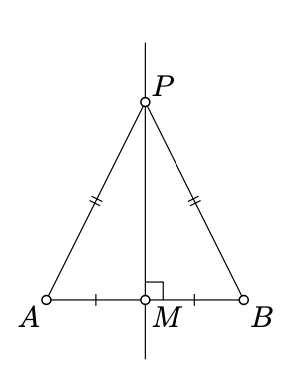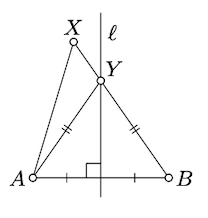5.2: Perpendicular Bisector
( \newcommand{\kernel}{\mathrm{null}\,}\)
Assume
The line
Given distinct points
- Proof
-

Let
Assume
Since
That is,
To prove the converse, suppose
Let
Show that
- Hint
-

Assume
Note that
Note that
This way we proved the "if" part. To prove the "only if" part, you need to switch


